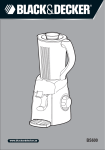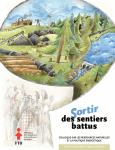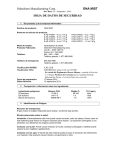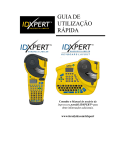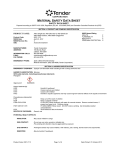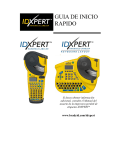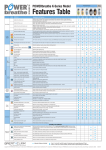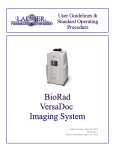Download Safety Booklet - Custodial Workers
Transcript
2011 Workplace Safety Booklet CUSTODIAL WORKERS KITIGAN ZIBI ANISHINABEG MORE INFORMATION REGARDING THE CONTENTS OF THIS BOOKLET CAN BE FOUND IN THE KITIGAN ZIBI ANISHINABEG WORKPLACE SAFETY PREVENTION PLAN PLEASE CONTACT YOUR DIRECTOR IF YOU WISH TO CONSULT THE MANUAL. KITIGAN ZIBI ANISHINABEG WORKPLACE SAFETY BOOKLET FOR CUSTODIAL WORKERS 2011. The following document was prepared for the Kitigan Zibi Anishinabeg by Deborah Decontie. This document has been adapted to meet the needs of the Kitigan Zibi Anishinabeg based on the Canada Labour Code and Federal and Provincial regulations with regards to Work Place Safety. Unless otherwise stated, references made in this document are from An Act Respecting Occupational Health and Safety. This current document has incorporated existing material from the Brush cutting Health and Safety Plan prepared for the Kitigan Zibi Anishinabeg by Linda Dwyer-Commando. In addition, I wish to acknowledge RexForet in granting permission to the Community to use certain sections within this booklet. 2 Introduction This booklet is intended for people who work as Janitors and Building Maintenance within the different establishments of the Kitigan Zibi Anishinabeg. This includes: Community Services Janitors Health & Social Services Building Maintenance Personnel Education Sector Head Janitor Daycare Janitor Education Sector Janitors KZPD Janitor This booklet addresses: rights and responsibilities of KZA Anishinabeg and its employees KZA safety disciplinary policy safety measures and preventative actions for custodial workers KZA protocol for temporary closure of buildings optimal conditions for work environments emergency safety precautions first aid WHMIS 3 Responsibilities of the Kitigan Zibi Anishinabeg as an Employer Safe Workplace Environment A safe workplace environment is everyone’s right and responsibility, regardless of his/her role or position within the Kitigan Zibi Anishinabeg. The KZA has an obligation to ensure that the health and safety of its employees are protected while they are working. This includes the proper installation and/or regular maintenance of: (1) All KZA buildings and structures (including guards, guard rails, barricades and fences); (2) All protective devices, machinery, equipment, tools, vehicles, and mobile equipment that is property of the KZA; (3) Heating, ventilation and air conditioning systems within KZA buildings. (4) In accordance with the Workplace Hazardous Materials Information System (WHMIS), the KZA will ensure that all hazardous substances are appropriately labeled. Material Safety Data Sheets (MSDS) will also be available to all employees who may be exposed to particular substances. (5) Overall, the Kitigan Zibi Anishinabeg will ensure to provide: (i) Safe entry and exits to and from workplaces specifically during hours of work; (ii) First-aid facilities and health services, sanitary and personal facilities, and safe drinking water; (iii) Employees with information, instruction, training and supervision to ensure their health and safety at work; (iv) Occupational health and safety training for Safety Committee members; (v) Responses to employees who have reported hazardous circumstances for those circulating within the workplace; (vi) The necessary resources required for Safety Committees. 4 Safety Measures Kitigan Zibi Anishinabeg will ensure to: (1) Investigate, record, and report all accidents, occupational diseases, and other hazardous occurrences as well as keeping and maintaining accurate health and safety records. (2) Adopt and implement prescribed safety codes and standards relating to fire safety and emergency measures. (3) Adopt and implement measures to protect against violence in the workplace, from both internal and external sources. (4) Ensure that the activities of every person granted access to the workplace do not endanger the health and safety of employees. (5) Ensure that the Safety Officer conducts monthly inspections of all or part of the workplace so that the entire workplace in inspected at least once a year. (6) Comply with oral and written direction by the Safety Officer. (7) Respond in writing to the Safety Officer’s direction or report when requested to do so. 5 Employee Rights Under the Canada Labour Code, employees have three key rights: the right to know, the right to participate, and the right to refuse dangerous work. The Right to Know Employees have the right to know about foreseeable hazards within a work area and be provided with necessary information, instructions, training and supervision to protect their health and safety. Employees may also be granted access to employer reports pertaining to work and health place safety through the Health and Safety Committee or the Safety Officer. The Right to Participate Employees have the right to participate in identifying and/or correcting concerns in the workplace that may be hazardous to themselves or other employees. The Right to Refuse Dangerous Work Employees have the right to refuse work if there is a reasonable cause that harm could come to themselves or other employees because of: (i) A dangerous workplace environment; (ii) Using a machine or apparatus that may present a danger; (iii) Performing an activity that constitutes a danger. 6 Employee Responsibilities Responsibilities of All Employees For my protection, and the protection of my co-workers, it is my responsibility to: (1) Become aware of the safety regulations. I must respect these regulations as well as all health and safety procedures that have the ultimate goal of preventing accidents; (2) Wear any individual protective equipment or clothing required for my job, and/or use any safety materials, equipment, or devices provided to protect me; (3) Refrain from bringing family members to work with me, to ensure their safety and the safety of my co-workers. (4) NOT consume or have in my possession any alcoholic beverages on the job site or while driving a vehicle, and to never arrive to work under the influence of alcohol or drugs; (5) Pay close attention to fire hazards at all times; (6) Use protective fire equipment and alarms that are installed in the case of a fire only; (7) Keep my work area and environment clean and orderly; (8) Avoid using tools, equipment or other objects that would put myself or my co-workers in danger; (9) Realize that any person not respecting safety regulations may have disciplinary measures brought against him/her; (10) Inform my supervisor immediately of any accidents that may or may not have caused an injury or damages to any equipment; (11) Submit a medical certificate to my supervisor authorizing me to return to work following an injury or sick leave; (12) Cooperate with management and other employees in an attempt to eliminate injuries; (13) Report any injury, illness or property damage to the immediate supervisor as soon as possible; 7 (14) Report hazardous conditions or unsafe work practices to the supervisor; (15) Know the location of all first aid equipment on the job; (16) Refrain from horseplay, fighting or practical jokes while working; (17) Operate only the equipment for which you are trained and authorized; (18) Follow proper lifting procedures. (Back straight, knees bent, load close to body); (19) Attend safety meetings when appropriate. Safety Disciplinary Policy Health and Safety Requirements are enforced to protect all workers from injury and illness. A safety disciplinary policy is in place to provide a mechanism for disciplining employees who repeatedly violate health and safety rules and guidelines. The Kitigan Zibi Anishinabeg believes that in order to maintain a safe and healthful workplace, employees must be cognizant and aware of all KZA, Provincial and Federal safety and health regulations as they apply to the specific job duties required. Failure of employees to comply with rules and regulations regarding Workplace Safety will lead to disciplinary consequences as outlined in the Kitigan Zibi Human Resources Policy. 8 Janitorial and Maintenance Work General Safety Rules for Janitorial and Maintenance Workers Cleaning: During my cleaning duties, I will: (1) Wear shoes with non-slip soles when working on wet floors; (2) Set up “Wet Floor” warning signs before mopping an area; (3) Leave the mop bucket in a visible area; I will avoid leaving it in potentially dangerous places such as around corners, or behind furniture or doors; (4) Ensure any electrical cleaning equipment (vacuum, buffer, etc) and their accessories (hoses, plug, cords) are in proper working order before use; (5) Ensure that chemicals are stored in approved, clearly labeled, properly sealed containers and are placed at or below eye level; (6) Wear the proper protective gear, such as goggles and gloves, when working with chemicals; (7) Employ proper techniques when lifting or moving heavy objects. I will get help if an object is too heavy to lift or move by myself; (8) Handle garbage bags with caution, as unaware of potentially harmful contents (broken glass or discarded sharp objects); (9) Comply with manufacturer’s instructions when using, diluting cleaning materials that contain hazardous chemicals; 9 (10) Ensure proper ventilation when using materials containing hazardous chemicals such as cleaning products or paint; (11) When mopping stairs, stand on the stair or two below the step being mopped, as this put less strain on the back; (12) Always place a “Wet Floor” sign at both the top and bottom of a stairway to warn others of danger. Buffing When using the buffer, I will: (1) Ensure the drive plate and buffing pad is securely attached before using the buffer. (2) Unplug the buffer before setting the handle, drive plate, or pad (3) Always return the buffer to an upright position before plugging it in. (4) Never leave the buffer with the handle in the horizontal position, as this presents a tripping hazard. (5) Store the buffer in an upright position with the drive plate and buffing pad removed. (6) Control the buffer with both hands when in use. (7) Keep the buffing pads clean, which will allow for easier use. (8) When stripping a floor, walk on the area that has already been scrubbed, when possible, to avoid the slippery part of the floor. Painting When painting, I will: (1) Be sure to work in well-ventilated areas when painting, open windows/doors to disperse fumes; 10 (2) Eliminate all sources of flames and avoid the use of electrical equipment that could produce sparks; (3) Not smoke while using paints; (4) Keep all containers tightly closed when not in use; (5) Keep paints and other maintenance products out of the reach of children and the general public; (6) Wear proper attire and use adequate protective equipment when using solvent-based paints: long-sleeve shirt, long pants, splash goggles to protect the eyes, butyl-rubber gloves to protect hands, and a respirator. (A dust mask is not adequate, as it will not protect against harmful vapours); (7) Dispose of leftover paints according to manufacturer’s instructions Chemical Safety To ensure my health and safety, I will: (1) Ensure to have WHIMIS training at least once a year to ensure the safe handling and use of hazardous chemicals and products. (2) Read and follow all labels before of products containing hazardous chemicals. (3) Know the location of Material Safety Data sheets for (MSDS) for products used. (4) Store chemicals and products in designated areas only. (5) Limit access to main storage and janitorial closet. (6) Use protective equipment provided, such as gloves or eyewear. (7) Never mix chemicals with other products, unless verifying the MSDS that it is safe to do so. (8) Never leave open containers of flammable products. 11 Cold To protect myself from cold, I will: (1) Not continuously expose myself to cold when the temperature is or falls below -32°C. (2) Wear gloves at temperatures below 4°C for light work and below 7° C for moderate work. (3) Dress appropriately for cold temperatures, including wearing multiple layers of light-weight, loose fitting clothing. (4) Wear footwear suited for cold temperatures (e.g., felt-lined, rubber-bottomed, leather topped boots with removable felt insoles.) (5) It is also strongly recommended to wear a hat, such as a wool knit cap or tuque or a liner under a hard hat to reduce excessive heat loss through the head. Heat In order to prevent heat-related illnesses such as heat rash, heat stroke, or heat exhaustion in extremely hot temperatures, I will (1) Wearing loose breatheable fabrics, such as cotton. (2) Drink plenty of cool 10°-15°C water every 15-20 minutes to avoid dehydration. Working With Electrical Power Tools When working with electrical power tools, I will ensure that: (1) Hand tools and portable power tools should be appropriate for the job intended, and used solely for the purpose for which it was designed. (2) Hand tools are examined regularly and repaired or replaced if found to be defective. 12 (3) I will not leave hand tools on the floor, in passageways, or elevated where the tool could fall on someone. (4) Tool handles, including axes, hammers, sledge-hammers, should be carefully adjusted at the heads, firmly fixed and replaced if defective. (5) I will not adapt an extension to a tool to tighten/loosen nuts, screws or bolts, as it is prohibited. (6) Cutting tools such as axes or saw will be transported in a manner to prevent contact with anyone, e.g. stored in a covered box or firmly attached to a vehicle. (7) The trigger of a portable power tool shall be designed to eliminate the risk of accidental start-up. (8) When carrying a power-tool, I will cut the power supply and wait for the tool to come to a complete stop. (9) Wear proper safety equipment such as safety glasses, goggles, or gloves. (10) Before turning on a power tool, I will inspect the tool and the cord for any signs of wear. (11) Ensure the switch is in the “OFF” position before connecting to a power supply. (12) Not use power tools in wet conditions. (13) Never break off the third prong on a plug. (14) Not remove power tools from the power source by pulling or tugging on the cord, use the plug instead. (15) Not use power tools that do not have machine guards. (16) Tape power cords to the floor whenever necessary so that no one accidentally trips over it. 13 Noise (1) I will wear hearing protection whenever I am subject to prolonged exposure of machines or work environments. Grounds Maintenance When performing grounds maintenance, I will: (1) Wear proper Protection Equipment: high-cut safety footwear with steel toes and reinforced soles. (2) Wear goggles when tilling, breaking up rocks or concrete, or using strong cleaning agents. (3) Use approved head protection when working under low or falling objects. (4) Wear sturdy gloves with grips. (5) Wear clothing that will provide sun-protection. (6) Not wear loose or torn clothing. 14 Refuelling Equipment When refuelling equipment, I will: (1) Shut off the engine and allow it to cool. (2) Fill the fuel tank before starting a job. (3) Position myself comfortably to refuel without slipping. (4) Remove the fuel cap slowly, holding it at the semi-locked position until pressure is released. (5) Allow the nozzle to empty by keeping it in the filler opening for a few moments after shutting off fuel flow. (6) Replace the fuel cap after checking to see that its venting is not clogged. (7) Store fuel in sturdy, approved containers identified according to WHMIS regulations. (8) Have fire extinguishers nearby. (9) Not smoke or have an open flame when refueling. (10) Not spill any fuel on equipment. Wipe up any residue before starting the engine. (11) If my clothes should catch fire, I will stop, drop and roll. Needlestick Injuries Needlestick injuries are wounds that are caused by needles that puncture the skin. Front-line workers may come across needles or syringes in the various home and/or work environments that they find themselves in. Therefore, it is important to be aware of this type of injury so as to avoid contracting any infectious diseases or blood borne illnesses. 15 (1) Recapping and Disposal Procedure (i) Never move an exposed needle tip towards an unprotected hand. (ii) Lay the cap on a flat surface and scoop it onto the tip of the syringe held in one hand, keeping the free hand away from the exposed needle. (iii) Needles should be disposed of in wide-mouth, puncture proof containers. Do not overfill the containers for this purpose. Working Alone (1) Janitors and Custodial workers will refrain from working alone under high-risk circumstances, which include working: (i) at heights; (ii) in confined spaces; (iii) with electricity; (iv) with hazardous substances or materials; (v) with hazardous equipment such as chainsaws or firearms. (2) Any high-risk tasks should be undertaken during normal business hours only or when a co-worker is present in case of an emergency. (3) Janitors who work alone should have a cell phone on them at all times. (4) A sign in-sign out book for Janitor’s is located at the Reception area of a building. Receptionists will ensure that any Janitor who has not signed out of a building is accounted for. Ladder Safety Ladder Safety Rules (1) Inspect before use for physical defects. (2) Ladders are not to be painted except for numbering purposes. 16 (3) Do not use ladders for skids, braces, workbenches, or any purpose other than climbing. (4) When you are ascending or descending a ladder, do not carry objects that will prevent you from grasping the ladder with both hands. (5) Always face the ladder when ascending and descending. (6) If you must place a ladder over a doorway, barricade the door to prevent its use and post a warning sign. (7) Only one person is allowed on a ladder at a time. (8) Do not jump from a ladder when descending. (9) All joints between steps, rungs, and side rails must be tight. (10) Safety feet must be in good working order and in place. (11) Rungs must be free of grease and/or oil. 17 All ladders must be equipped with safety (non-skid) feet. Portable ladders must be used at such a pitch that the horizontal distance from the top support to the foot of the ladder is about one-quarter of the working length of the ladder. 18 Stepladder Safety Rules (1) Do not place tools or materials on the steps or platform of a stepladder (2) Do not use the top two steps of a stepladder as a step or stand. (3) Always level all four feet and lock spreaders in place. (4) Do not use a stepladder as a straight ladder. (5) Straight type or extension ladders (6) All straight or extension ladders must extend at least three feet beyond the supporting object when used as an access to an elevated work area. (7) After raising the extension portion of a two or more stage ladder to the desired height, check to ensure that the safety dogs or latches are engaged. (8) All extension or straight ladders must be secured or tied off at the top. When transporting materials When I am transporting materials, I will: (1) Not consume drugs, alcohol, medications or any other substances that may affect my driving. (2) Will stow all belongings properly before leaving. (3) Make any required adjustments in the vehicle such as seats, mirrors, steering wheel, climate controls, etc. before leaving. (4) Wear my safety belt at all times (5) Adhere to the rules of the Highway Safety Code including the observance of the speed limit as well as all traffic lights and signs. (6) When fueling a vehicle, will stop the motor, refrain from smoking or using a cellphone and not perform other tasks at the same time (to prevent accidental spills). 19 (7) Will not text, take or make any calls on my cellphone while driving. If absolutely necessary, I will pull over in a safe location to use a cellphone. Custodial Rooms (1) The KZA will ensure that Custodial Rooms are equipped with: (vi) MSDS for all products (vii) Safety goggles/glasses (viii) “Wet Floor” Signs (ix) A measuring cup (x) Mixing Station (xi) Earplugs (2) Custodial Rooms must be: (xii) Well ventilated (xiii) Have proper lighting, adequate for reading labels 20 Manual Material Handling Workers assigned to the handling of loads or persons shall be instructed in the proper manner of performing their work safely. O.C. 885-2001, s. 166. (3) I will use proper ergonomic techniques for picking up heavy loads such as boxes or other objects. This lift is the most common method of good lifting technique. Use the basic lift for objects small enough to straddle where you have enough room to use a wide stance. O.C. 885-2001, s. 166. Safe Lifting Technique 1. Get close to the object. 2. Stand with a wide stance: put one foot forward and to the side of the object. 3. Keep your back straight, push your buttocks out, and use your legs and hips to lower yourself down to the object. 4. Move the load as close to you as possible. 5. If the box has handles, grasp the handles firmly and go to step 9. 6. Put the hand (that is on the same side of your body as the forward foot) on the side of the object furthest from you. 7. Put the other hand on the side of the object closest to you. Your hands should be on opposite corners of the object. 8. Grasp the object firmly with both hands. 9. Prepare for the lift: look forward. 10.Lift upwards following your head and shoulders. Hold the load close to your body. Lift by extending your legs with your back straight, your buttocks out, and breathe out as you lift. SOURCE: U.S. Army Center for Health Promotion and Preventative Medicine, Ergonomics Program. (“Copying and distribution of this pamphlet is authorized and encouraged”). 21 Optimal Work Environments Obligations of the KZA for Optimal Workplace Conditions The purpose of this Regulation is to establish standards…to ensure the quality of the work environment, to safeguard the health of workers and to ensure their safety and physical well-being. O.C. 885-2001, s. 3. Building Maintenance Note: While the maintenance or janitorial staff will be responsible for the required cleaning of maintenance of specific areas, they should keep the following regulations in mind: Directors will ensure that any equipment installed within their buildings will ensure proper conditions, be operational and shall give optimal performance during the hours of business. O.C. 885-2001, s Any and all access ways that lead to the building must be kept in good condition, free from any obstructions, maintained so as to avoid a slippery surface, protected from falling objects and/or materials, and should be properly lit. O.C. 885-2001, s.6 Floors and walkways should be kept in good order, clean and free from any obstruction and be maintained to keep the surface free from becoming slippery. O.C. 885-2001, s.14 & s.15 Cleaning of the work premises should be ensured through wet mopping, vacuuming, or any other method that will reduce to a maximum the stirring up of dust. O.C. 885-2001, s.17 All refuse, sweepings or other residues will be removed and placed in the appropriate refuse containers for that purpose. O.C. 885-2001, s.18 22 Machines should be located in a safe manner to provide necessary free space for their upkeep and handling of material. O.C. 885-2001, s. 19 Air Quality (1) The percentage of oxygen in any work location shall not be less than 19,5% at normal atmospheric pressure. Ventilation and Heating (1) If ventilation in buildings is through mechanical means, then the ventilation systems and devices should be in compliance with state-of-the-art techniques current at the time of installation. In the case where natural ventilation is used such as windows, shutters, or vents. O.C. 885-2001, s.101 (2) Mechanical ventilation systems should be changed at least once a year, with filters being changed as required O.C. 885-2001, s.104 Heating Environment (1) An appropriate temperature should be maintained according to the nature of the work. The recommended minimum temperature for a lunch room for example, is 20°C. O.C.885-2001, s.116 & s. 118 Humidity (1) A relative humidity percentage of at least 20% should be maintained during hours of operation of any KZA buildings. O.C. 8852001, s.119 Lighting (1) All buildings should be equipped with sufficient lighting, whether natural or artificial dependant on the nature of the work being performed. O.C. 885-2001, s.125 23 Washrooms (1) All washrooms will have at the disposal of the employees, soap or other cleaning products, paper towels or hand dryers, and waste paper baskets. (2) All washrooms will be provided with toilet paper and kept in good working order. (3) Cracked or damaged toilet seats will be replaced immediately. (4) The sanitary facilities will be accessible, and maintained in sanitary condition (which includes being cleaned and washed before each shift, and disinfected daily. O.C. 885-2001, ss. 161-165 24 Temporary Closure Protocol Due to circumstances beyond the Kitigan Zibi Anishinabeg’s control, certain buildings may be temporarily considered unfit working environments. This may be caused by lack of electricity, a lack of heat (in the winter), flooding or other conditions that make the work environment unsafe. In such instances, the Director will take immediate action to remedy the situation and notify the employees as to when and how the situation will be rectified. Employees are required to remain in the building until being notified otherwise. If, after two hours, the situation is not resolved, employees from the affected building will be sent home temporarily. Employees that are sent home in the morning will be required to report back to work at 1:00 p.m., to see whether the problem has been remedied. If the situation arises in the afternoon, the employees will be sent home for the rest of the day. Note that ONLY employees who work in the affected building may be sent home; the dismissal is not applicable to the entire sector. Also, the dismissal affects only employees who have reported to work on that particular day. Employees who did not report to work that morning, due to scheduled leave or for other reasons, will have their sick/vacation leave credits deducted as if the day was considered a regular work day. 25 Emergency Safety Precautions (1) For each building: The Safety Officer, in collaboration with the Director of each sector will ensure that emergency evacuation plans and drills are in effect for each building within the Kitigan Zibi Anishinabeg, in line with the following regulations: (i) Emergency evacuation plans should be prepared and enforced. O.C. 885-2001,s.34 (ii) Rescue/Evacuation drills should be held once a year, and adapted to the possible risks and nature of activities carried on in the building. O.C. 885-2001, s. 35 (2) Fire Extinguishers (i) Fire extinguishers should be installed in the areas of the building where there is a localized risk of fire. (ii) All fire extinguishers should: 1. Be in compliance with the NFPA-10 Portable Fire Extinguishers standard. 2. Be approved by Underwriters Laboratories of Canada (U.L.C.) 3. Provide protection according to the nature of the present hazard. 4. Be filled after use. 5. Bear the name of the person entrusted therewith and include the date of the last inspection. (3) O.C. 885-2001, s. 37 Alarm and Detection Systems (i) Alarm and detection systems and emergency lighting shall always be in good working order. 26 O.C. 885-2001, s. 38 First Aid The Kitigan Zibi Anishinabeg will ensure that: (1) Each building and/or construction site within the Kitigan Zibi Anishinabeg will be equipped with an adequate number of first aid kits. (2) The kits must be readily accessible, transportable and available at all times. (3) It does not take more than five minutes to access a kit. If this is the case, the KZA will remedy the situation by adding additional kits to their buildings or construction sites. (4) First Aid kits are kept clean, fully equipped, and in good condition. (5) The expiry dates of the contents are checked regularly and replaced as required. (6) Partially used sterile material will be discarded. First Aid Kit Contents (1) In addition to the standard items (see chart on next page), it is strongly recommended that these items be added to the first aid kit: (i) Pocket mask; (ii) Disposable gloves; (iii) Antiseptic soap (2) The kit must not contain any medication. First aiders in the workplace are not authorized to give medication in any form whatsoever, unless they have received additional training to administer oxygen or adrenaline. 27 Standard Items First Aid Manual 1 pair of Bandage Scissors Splinter Forceps Description Notes First Aid Manual and Guide Must be a CSST approved manual Metal scissors with a rounded tip used to cut gauze strips or adhesive tape. Disinfect with alcohol (or with another disinfectant solution) before and after use. Thoroughly wash and dry before storing. Make sure the scissors are sturdy and of good quality. Pointed forceps used to remove small foreign bodies such as splinters. Disinfect with alcohol (or with another disinfectant solution) before and after use. Thoroughly wash and dry before storing. Make sure that the forceps are sturdy and of good quality. 12 Safety Pins of Assorted Sizes Useful for fastening triangular bandages, gauze bandages, etc. 25 sterile bandages, individually wrapped Useful for protecting a wound Avoid touching the surface of the gauze so as to prevent contamination. Avoid fastening the bandage too tightly when applying it to an extremity. Discard any bandage that is not in an airtight wrapper or that has been damaged by water or moisture. Useful for covering larger wounds or applying pressure to an area that is bleeding. Open the envelope where indicated and remove the gauze by holding onto one corner so as not to contaminate the square. Always avoid touching the gauze surface that covers the wound. Sterile Gauze Squares (25) (4 in. x 4 in.) (Individually wrapped) Rolls of Sterile Gauze Bandage (4) 50 mm x 9 m (2 in. x 30 ft.) (Individually wrapped) Rolls of Sterile Gauze Bandage (4) 101.6 mm X 9 m (4 in. x 30 ft.) (Individually wrapped) Always apply from the bottom of the injury to the top. Strips of sterile gauze or cotton bandage used to hold sterile gauze squares in place. Used to immobilize a limb or stabilize a limb Triangular Bandages (6) Sterile Bandage Compresses (Pressure Dressings) (4) 101.6 mm x 101.6 mm (4 in. x 4 in.) (Individually wrapped) Roll of Adhesive Tape (1) Alcohol Swabs (25) Bandages consisting of several layers of sterile gauze, filled with cotton batting and fastened using strips of gauze. When opening, be careful not to touch the gauze; apply directly over the wound. Used to apply fast, effective pressure in case of profuse bleeding. Make sure that the bandages and compresses applied directly over the wound are sterile. Adhesive tape used to fasten bandages or protective dressings. Avoid using in case of allergies (an anti-allergic tape is available on the market). Small swabs filled with an antiseptic solution and packaged in sealed envelopes. 28 Wrap the gauze strip firmly around the injured limb so as to reduce or stop bleeding. Never apply directly on the face. Procedure for Treating Severe Allergic Reactions Anaphylaxis is a severe, life-threatening type of allergic reaction that occurs when a person’s body reacts to an allergen (sometimes called a “trigger”). Food is the most common trigger, but insect stings, medicine, latex or even exercise can also cause a reaction. Within minutes, an allergic reaction may turn into a life-threatening situation for a severely allergic person. The two most common symptoms of anaphylaxis include: • Hives • Swelling, especially around the throat, lips and tongue Other symptoms include: • Difficulty breathing or swallowing • Metallic taste or itching in the mouth • General redness or itching of the skin • Stomach cramps, nausea, vomiting or diarrhea • Increased heart rate • Sudden drop in blood pressure • Paleness • Sudden feeling of weakness • Anxiety or an overwhelming sense of doom. In a severe allergic emergency, quick symptom recognition and IMMEDIATE TREATMENT are vital. Any delay can be FATAL. EpiPen Injector Epinephrine (i.e., adrenaline) can be used to treat anaphylaxis. The EpiPen is an auto-injection device that administers a pre-measured dose of epinephrine. The EpiPen works by relaxing the muscles in a person’s airways to make breathing easier, helps to revers the rapid and dangerous decrease in blood pressure, and relaxes the muscles in the stomach, intestines and bladder. The EpiPen is designed to be used immediately in an emergency, to treat an allergic reaction fast and give you time to get to a hospital or medical center. It is not a substitute for emergency medical treatment. Use the EpiPen as soon as the first signs and symptoms of anaphylaxis appear. 29 How to Use the EpiPen 30 WARNING: The EpiPen must only be injected into the thigh. Accidentally injecting adrenaline into the hands or feet may cause the loss of blood circulation in those body parts. In case of accidental injection, report to the nearest emergency clinic to receive immediate medical attention. After Using the EpiPen (1) Call 911. Seek immediate emergency attention. (2) The majority of the solution (1.7 ml) will remain in the injector after activation. This is normal. (3) If no signs of improvement are noticed after 5 minutes, proceed with a second injection of adrenalin if needed, using the same procedure. (4) Perform cardiopulmonary resuscitation if needed, until help arrives (5) If practical, take the person to the nearest emergency clinic. Bring the used EpiPen and informing the physician that the person has received the intramuscular shot of adrenalin. Important Safety Information (1) The EpiPen should be ready at all times; (2) Read the directions carefully before an emergency occurs. (3) Do not remove the safety cap until the device must be used. The injected quantity is only 0.3 ml. (4) Protect from light and extreme heat. (5) Always keep the unit in its tube; (6) Replace before expiration; (7) Replace injectors with brownish solution containing solids. (8) Replace unit if solution isn’t transparent. (9) Keep in a dark, cool environment (15º - 30º C / 59º - 86º F) (10) DO NOT REFRIGERATE. 31 Insect Stings Non Allergic Person (1) When an insect such as a bee or a wasp stings a person, his/her body releases a chemical called histamine into the skin. In a non-allergic person, the histamine will simply cause redness, itching and a ring or bump at the site of the sting. In such cases, it would be helpful to: (i) Remove the stinger as soon as possible, if it has been left in the skin: 1. The best way is to scrape the skin with a thin dull edge (e.g., credit card, table knife, fingernail) to remove the stinger, and avoid turning it or pushing it in. 2. Avoid using tweezers if possible, as this may release some of the poison into the wound. However, use the tweezers if it is the quickest way to remove it, as speedy removal is what matters most in reducing the risk of infection. (ii) Wash the affected area with soap and water. (iii) Apply a cold compress (e.g., an instant cooling bag) to decrease swelling. (iv) If available, apply a sodium bicarbonate compress (paste of baking soda and water). (v) Ensure the person stays warm and avoids exertion. (vi) Monitor the person’s condition; if he/she develops red spots or major swelling, but can still breathe normally, see a physician. Major Reactions (1) When someone is severely allergic to insect stings, histamine may also be released into the airways, lungs and other vital organs. This is a VERY DANGEROUS situation, as it causes tissues to swell and can close the airways, causing breathing to stop. (2) If you see any part of the person’s face swelling and s/he has trouble breathing or is exhibiting other symptoms of anaphylaxis, USE THE EPIPEN IMMEDIATELY as per the procedures outlined earlier. (3) Call 911 and seek immediate medical attention. 32 WHMIS WHMIS stands for the Workplace Hazardous Materials Information System. WHMIS was created to reduce the occurrence and injury caused by hazardous materials in the workplace. It protects Canadian workers by providing safety and health information about hazardous workplace materials. The three key elements that make up WHIMIS are: Material Safety Data Sheets (1) Material Safety Data Sheets (MSDS) provide employees with information regarding products that are deemed hazardous under the Controlled Products Regulations (CPR) Act. They are meant to inform employees about any dangers, precautions, and possible reactive measures to use when dealing with potentially harmful substances; (2) MSDS should be on the premises of the job site where they are easily accessible to workers, and in the language they will understand it in; (3) MSDS contain the following types of information: (i) Product information (ii) Information on the preparation of the MSDS (iii) Hazardous Ingredients (iv) Physical data (v) Fire and explosion hazards (vi) Reactivity data (vii) Toxicological properties (viii) Preventative measures (ix) First Aid measures 33 Hazardous Materials Hazardous materials are divided into six main classes under WHIMIS classification system which are symbolized as follows: A Compressed gas B Flammable gases Flammable liquids Combustible liquids Flammable solids Flammable aerosols Reactive flammable materials C Oxidizing material D1 Poisonous and Infectious Material Very toxic material causing immediate and serious effects Toxic material causing immediate and serious effects D2 Very toxic material causing other effects Toxic material causing other effects D3 Biohazardous Infectious Material E Corrosive material F Dangerously reactive material 34 Worker Education and Training (1) The onus is on the employer to ensure that: (i) Controlled products used, stored, handled or disposed of in the workplace are properly labeled; (ii) MSDS are made available to workers; (iii) Workers receive education and training to ensure the safe storage, handling and use of controlled products in the workplace. (2) The KZA has the primary responsibility for educating its employees regarding WHIMIS regulations and must include the following elements: (i) Basic Training 1. Give information on the hazards of every controlled product present in the work environment. 2. Training on the nature and meaning of information disclosed on labels, MSDS or other identifying indicators (color, numbers, etc) (ii) Specific Training 1. Follow guidelines in order to ensure the safe use, storage, handling and disposal of controlled products. 2. Follow procedures in the event of a spill or fugitive emission. 3. Emergency procedures (firefighting and evacuation measures). (3) Employee Responsibilities Employees must be able to apply the information that they receive so as to protect themselves properly. Employees are responsible for: (i) Reading, understanding and applying information supplied by the employer; (ii) Informing the employer whenever there is insufficient information available to work safely with a hazardous product used in the workplace; (iii) Participating in programs developed in conjunction with the Health and Safety representatives; (iv) Wearing personal protective equipment when engineering methods and modifications to work methods are not sufficient to reduce the exposure to hazardous materials to acceptable levels. Such equipment must comply with regulations. For more information on WHIMIS, contact www.hc-sc.gc.ca 35 KITIGAN ZIBI ANISHINABEG BOX 309 MANIWAKI, QUEBEC J9E 3C9 36





































